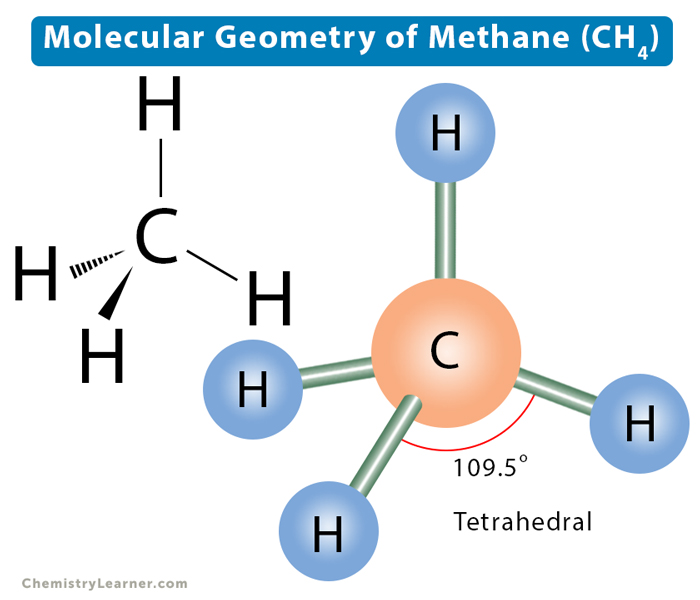Molecular Geometry of Methane (CH4)
Methane (CH4) is the simplest of all organic compounds. It is composed of hydrocarbons, that is, carbon (C) and hydrogen (H) atoms.
The periodic table shows carbon in Group 14 and hydrogen in Group 1. Therefore, the number of valence electrons in carbon is 4, and that in hydrogen is one. Carbon requires four more electrons to complete its valence shell. Hydrogen requires one electron to acquire the electron configuration of its nearest inert gas neighbor, helium. Lewis structure is a pictorial representation of a molecule using dots and dashes. Dots represent lone pairs, and the dash indicates a bond. Since carbon has no lone pair, the CH4 molecule shows four single C-H bonds [1-4].
VSEPR theory is an effective way of predicting the geometry of molecules. According to this theory, the bond electrons are positioned to have a minimum repulsive effect. As a result, a molecule having no lone pairs displays a tetrahedral molecular structure. The angle between the individual C-H bonds or the bond angle is 109.5°. Because there are no lone pairs, methane’s tetrahedral shape is not distorted. The molecular geometry and the electron geometry are the same. The VSEPR notation of methane is AX4.
